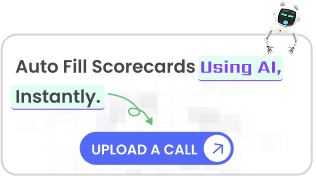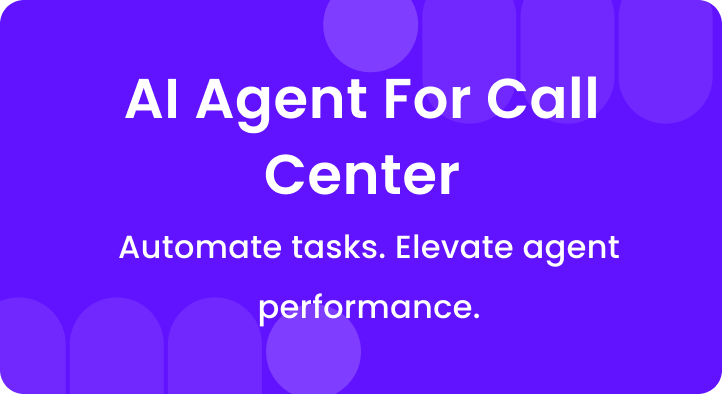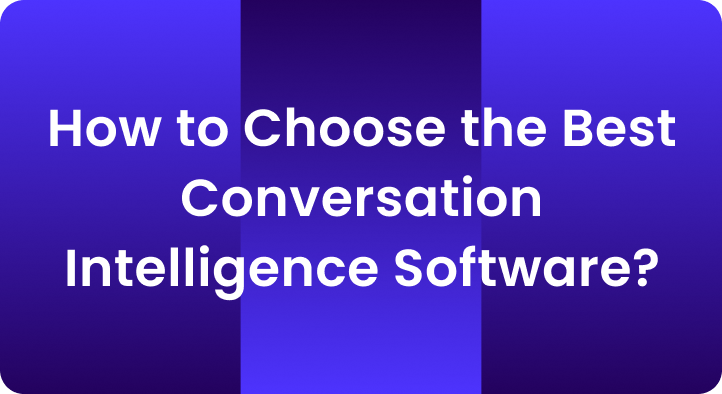“That was a good call… right?”
If you’ve ever said that after a review, you’re not alone. It sounded okay. The agent followed the script.
But the tone felt cold. The hold time dragged. And compliance? Kinda iffy.
Here’s the truth: Good calls don’t always mean great experiences. That’s why QA scorecards exist.
Not to play call cop. But to spot what matters.
What’s working. What’s missing? And how to fix it fast.
💡 Stat check: Contact centers that use scorecards cut repeat calls by 20%.
A solid QA scorecard helps you:
- Keep things fair
- Coach with context
- Improve CX without micromanaging
Let’s build a scorecard that actually makes your job easier.
One that helps agents grow—and customers stay.
Table of Contents
A. What’s a QA scorecard? (and what it’s not)
A QA scorecard is a tool used to evaluate agent calls.
It tracks how well agents follow processes, policy, and soft skills.
Think of it as your quality control checklist—with purpose.
But here’s the deal:
It’s not just about ticking boxes. It’s about measuring what truly matters to the customer experience.
You’re not just asking:
“Did the agent greet properly?”
You’re asking:
“Did they listen? Did they solve the issue? Stay compliant?”
A great QA scorecard helps you:
- Keep things fair and consistent
- Track agent performance over time
- Coach with context
- Tie call quality to business goals
📉 Fact: QA teams without scorecards waste up to 30% of their time.
Also, just a heads up:
Scorecards aren’t set-it-and-forget-it. They need to grow with your team.
Manual scoring works at first. But when calls increase, it gets wild.
That’s when smart tools like Auto QA come in handy.
Bottom line?
A QA scorecard is your playbook for great calls.
Without it, you’re just guessing. With it, you’re coaching with clarity.
B. Key components of a great QA scorecard
Alright, let’s break it down. A good QA scorecard isn’t bloated or boring.
It’s clear, fair, and focused on what actually matters.
Here are the must-have parts:
| Component | What to check | Why it matters |
| Call Opening | Friendly greeting, set tone | First impressions stick |
| Problem Understanding | Asked the right questions, listened well | Can’t fix what you don’t understand |
| Resolution | Solved the issue, gave clear info | Customers want outcomes, not excuses |
| Compliance | Followed rules, read disclaimers | Avoids legal risks and penalties |
| Soft Skills | Showed empathy, stayed calm | Drives trust and customer loyalty |
| Call Closing | Polite wrap-up, offered help | Leaves a lasting positive vibe |
| Scoring Scale | 1–5, Pass/Fail, or % scale | Keeps evaluation fair and simple |
| Notes Section | Space for comments and coaching tips | Helps personalize agent feedback |
Let’s break it down further
1. Call Opening – First impressions count
You don’t get a second shot at a first impression.
The first few seconds of a call set the whole vibe.
Your agent needs to come in warm, confident, and ready.
What to look for
- Did the agent greet the customer properly?
- Did they introduce themselves by name?
- Did they set expectations for the call?
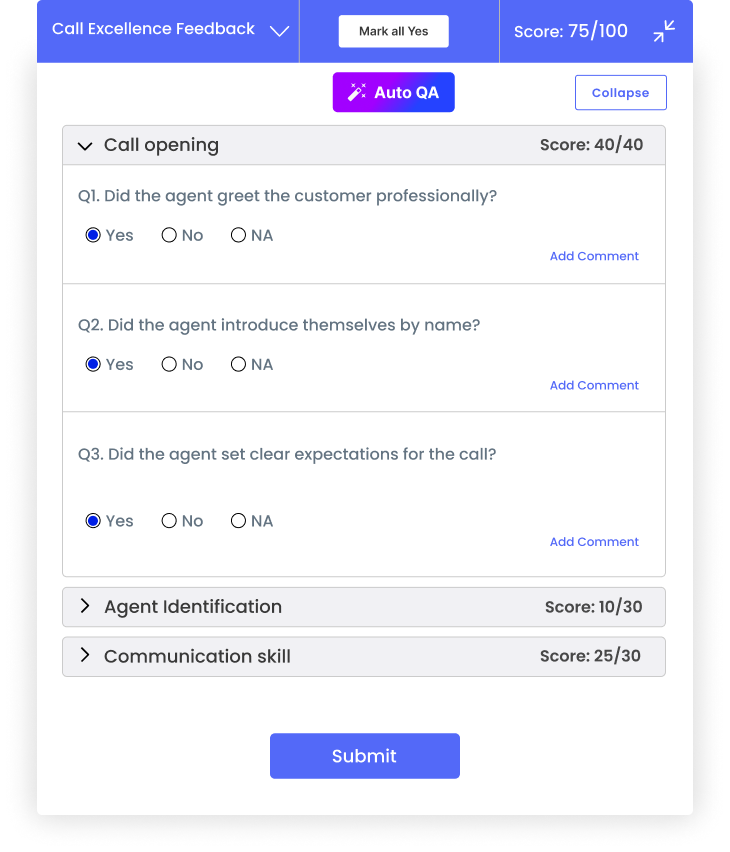
Example:
“Hi, this is Jamie from ABC Finance. How can I help you today?”
If the tone’s off—too robotic, too rushed—the customer checks out.
And that’s not a good start.
Scoring tips:
Use a 1–5 scale or a simple yes/no. Also, add “Tone & Clarity” as a separate checkpoint.
According to Forrester, 86% of customers say a friendly agent makes them loyal.
Play 3 recordings—bad, good, and great—to show agents the difference.
2. Problem understanding – listening is a superpower
This is where agents prove they’re not just reading scripts.
They need to understand the issue before trying to fix it.
That means listening, probing, and confirming.
What to check
- Did the agent ask follow-up questions?
- Did they repeat the issue to confirm?
- Were they patient while the customer spoke?
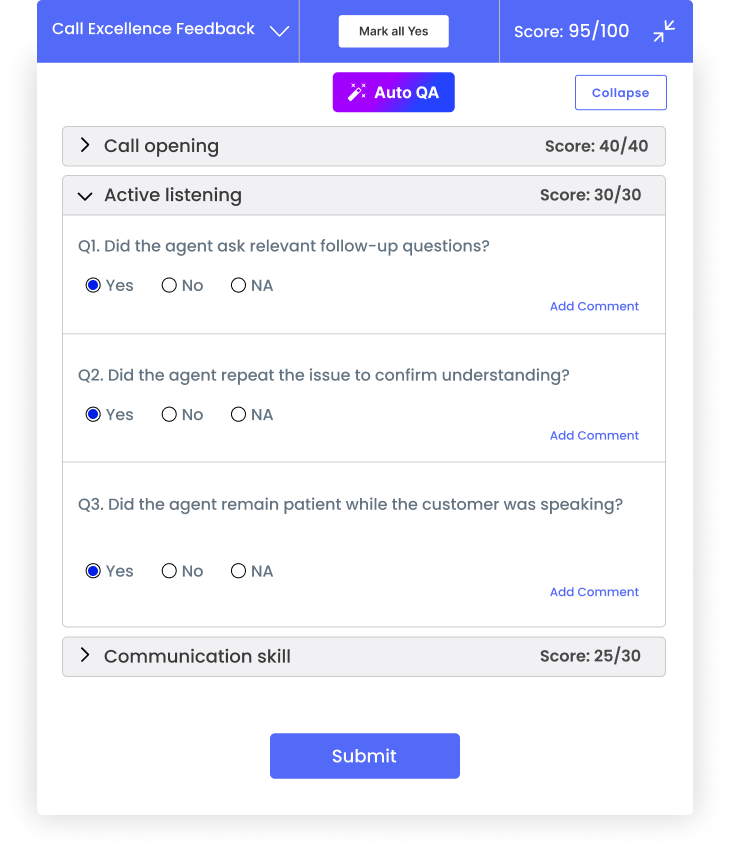
Example:
“Okay, so your payment didn’t go through on the app, right?”
Agents shouldn’t assume or jump to solutions too fast.
That’s how mistakes (and angry callbacks) happen.
Scoring tips:
Active listening, clarification, no interrupting
According to Zendesk, 60% of customers say agents don’t listen enough.
Encourage agents to take brief notes while the customer talks.
3. Resolution – the real deal
You can sound great and still mess this up.
If the issue ain’t fixed, nothing else matters.
The goal here? Clear, accurate, and complete resolution.
What to check
- Was the solution accurate and complete?
- Did the agent double-check if it worked?
- If they had to transfer, did they give full context?

Example:
“I’ve updated your address. You’ll get the new card in 5 days. Anything else I can help with?”
Avoid agents who say, “I’m not sure” and leave it hanging.
Or worse—give wrong info just to end the call.
Scoring tips:
One-call resolution, confidence in response, and transfer with full handoff, if needed.
According to HubSpot 67% of people say solving their issue fast is key to a good experience.
Track “Repeat Calls” linked to agents to spot gaps.4. Compliance – no slips alowed
This is where legal meets quality.
Especially in finance, insurance, and healthcare—you can’t mess this up.
One missing disclaimer = big trouble.
What to check
- Did they read all mandatory disclaimers?
- Did they avoid risky phrases or promises?
- Was customer info handled securely?
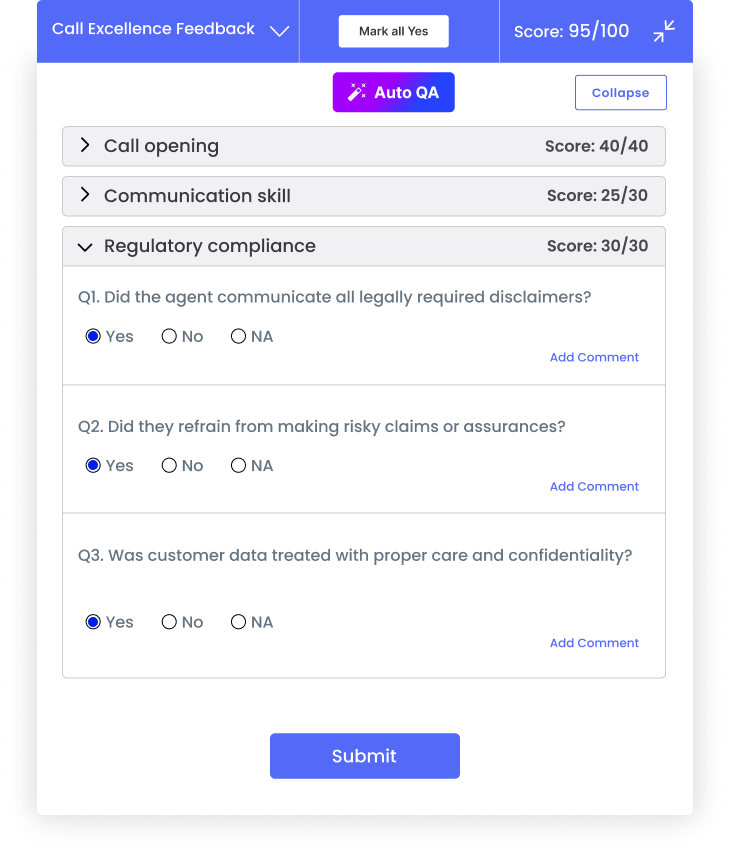
Example:
“This call may be recorded for training and compliance purposes.”
Scoring tips:
Use Yes/No here. No maybes. If it’s required, it’s black and white.
According to the FTC, Non-compliance fines can go up to $50,000 per call.
Pro Tip💡
Make a checklist for industry-specific legal talk. Review it weekly.
5. Soft Skills – The human touch
People don’t remember what you said.
They remember how you made them feel.
Soft skills are the game-changers.
What to check
- Did the agent stay calm and respectful?
- Did they show empathy when the customer was upset?
- Did they avoid sounding robotic?
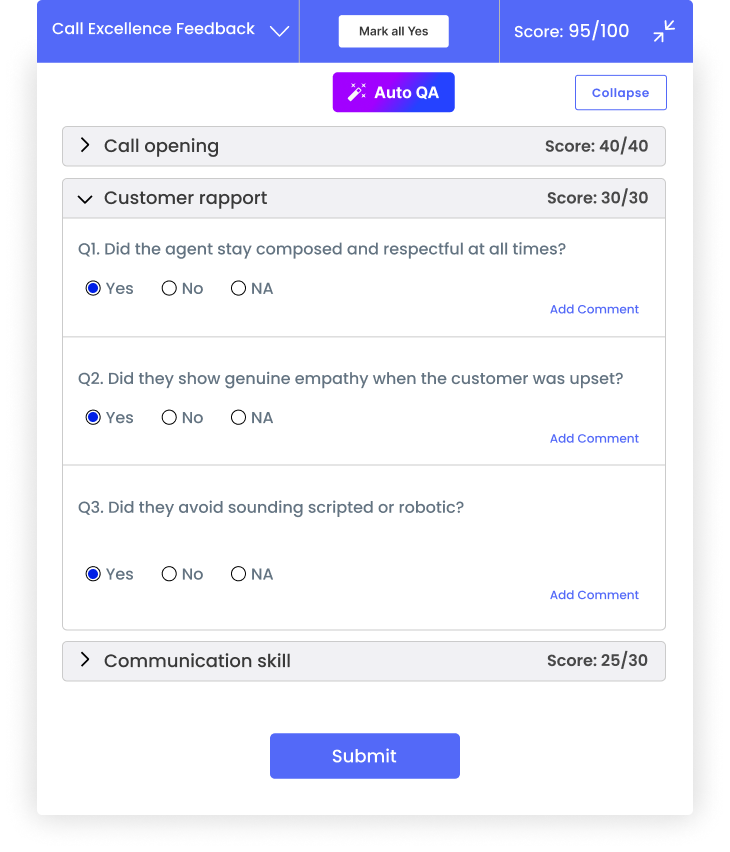
Example
“I can imagine how frustrating that must be. Let’s get this sorted.”
These little phrases build trust.
They tell the customer, “I hear you.”
Scoring tips:
Empathy, patience, and friendly tone
According to Qualtrics, 90% of customers say empathy matters in support.
Pro Tip💡 Use soft skill snippets in coaching decks—like emojis, tone tags, or sample phrases.
6. Call closing – leave a good final vibe
Even if the call has bumps, a good close can save it.
You want customers to hang up smiling—not confused or annoyed.
What to check
- Did the agent confirm the issue was fixed?
- Did they ask if anything else was needed?
- Did they thank the customer?
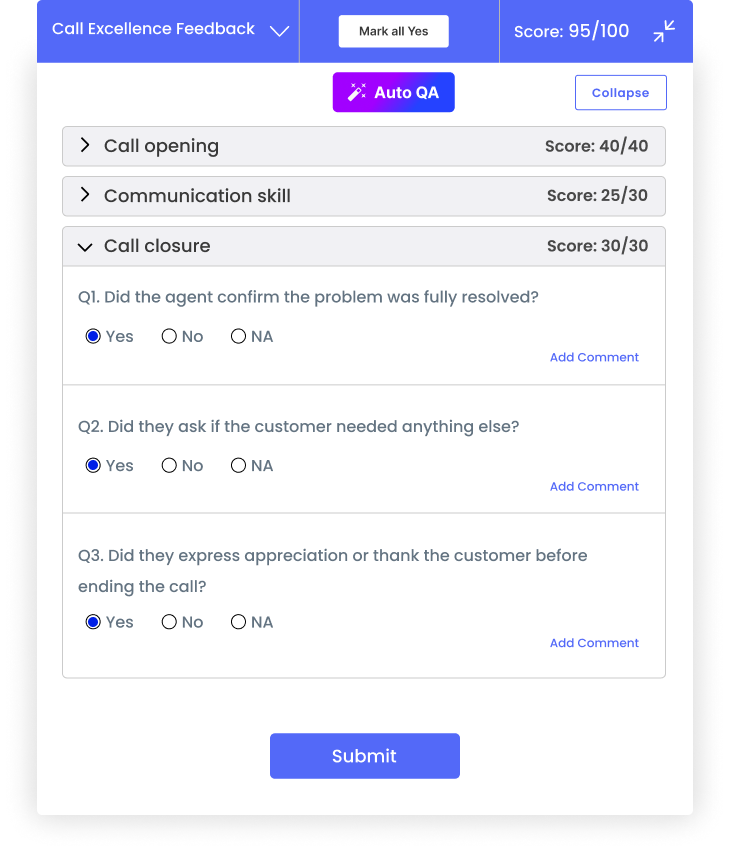
Example:
“Thanks for calling, Alex! Glad we got this fixed. Have a great day!”
Scoring tips:
Wrap-up summary, offer more help, polite goodbye
Create “closing scripts” agents can customize, not just read.7. Scoring scale – keep it fair & simple
How you score matters as much as what you score.
Too complex, and reviewers won’t use it right.
Too vague, and agents won’t learn from it.
Top options
- Yes/No: Fast, but with limited detail
- 1 to 5: Balanced, easy to explain
- Percentage: This is More precise, but it takes time
Choose based on your QA team’s size and pace.
Add tooltips or examples beside each score range. Like: 🟢 5 = “Perfect execution”
🟡 3 = “Needs work”
🔴 1 = “Big miss”8. Notes section – the coaching zone
Here’s where the magic happens.
Numbers are cool. But notes tell the story.
They help agents grow, not just get scored.
What to write
- One win
- One area to improve
- A quick next-step tip
Example
“Great empathy shown. Next time, double-check the account ID before updating.”
Pro Tip💡
Use emojis or bullet points to keep it clear and quick.
C. Scoring methods that actually work
1. Not all scoring systems are built equal
Scoring can help agents grow—or totally confuse them.
Too complex? No one uses it.
Too basic? Doesn’t give useful insight.
Let’s break down the scoring styles that actually work in real life.
2. Yes/No scoring – fast and simple
This method is a checklist. Either the agent did it or didn’t.
Best For:
- High-volume call centers
- Compliance checkpoints
- Binary actions (like disclaimers)
Pros:
- Easy to train
- Fast to review
- Great for legal compliance
Cons:
- No room for “almost”
- Lacks depth for coaching
Use this for black-and-white items only. It’s not great for soft skills.3. Numeric scale (1 to 5) – balanced and coachable
This is the most popular method.
It gives more flexibility without making it complicated.
Sample scale:
5 = Excellent
4 = Good
3 = Needs improvement
2 = Poor
1 = Not done
Pros: Cons:
Add a scoring guide with behavior examples for each number.
4. Call center QA scorecard template
| Category | Criteria | Score (Y/N or 1-5) | Comments / Notes |
Call Opening | Agents greeted and introduced themselves properly | ||
| Set clear expectations for the call | |||
Problem Understanding | Actively listened to the issue | ||
| Asked relevant follow-up questions | |||
| Reconfirmed the customer’s concern | |||
Resolution | Provided accurate and complete solution | ||
| Verified that the issue was resolved | |||
| Transferred only when needed, with context | |||
Compliance | Followed all mandatory scripts/disclaimers | ||
| Handled sensitive info securely | |||
Soft Skills | Showed empathy and patience | ||
| Used polite and professional language | |||
| Maintained a calm tone during tough interactions | |||
Call Closing | Summarized resolution clearly | ||
| Asked if customer needed anything else | |||
| Thanked the customer and ended positively | |||
| Scoring Summary | Total Score / % | ||
| Reviewer Comments | E.g., “Great tone! Just recheck the disclaimer next time.” |
Notes:
- You can score in Yes/No, 1–5, or %—based on your system.
- Use the “Reviewer Comments” area to give coaching advice.
- You can also tag a call type (inbound, outbound, support, sales) at the top if needed.
5. Percentage-based scoring – most detailed
This breaks a call into weighted sections.
Each section is worth a percentage of the total score.
Example:
Call Opening – 10%
Problem Solving – 40%
Compliance – 20%
Soft Skills – 20%
Closing – 10%
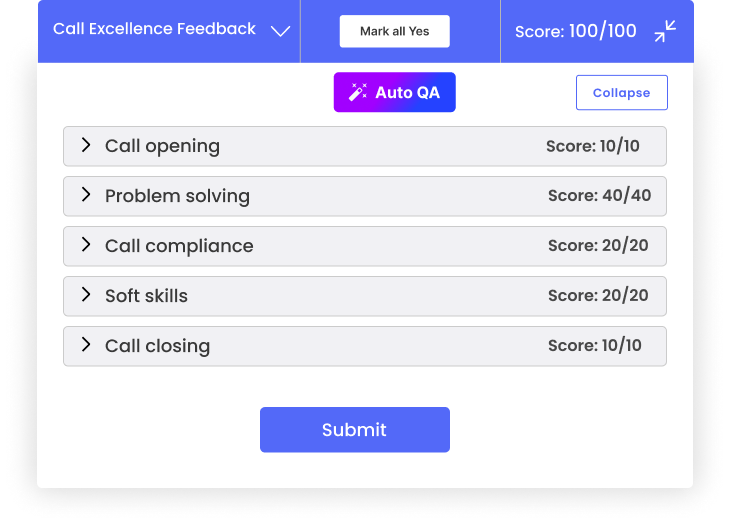
Best For:
- In-depth reviews
- Coaching + reporting
- High-stakes calls (sales, collections)
Pros:
- Very detailed
- Makes it easy to tie QA to KPIs
- Great for performance tracking
Cons:
- Takes longer to score
- Can overwhelm reviewers
Pro tip💡
Use tech like Enthu.AI to speed this up. Manual scoring slows teams down.
6. Stat that hits
Call centers that link QA scoring to coaching see 28% faster agent ramp-up.
7. Bottom line
Don’t pick a scoring method just because it’s popular.
Choose what fits your team’s call types and goals.
You can even mix and match. Like:
- Yes/No for scripts
- 1 to 5 scale for behavior
- Percentages for reports
Whatever you pick, make sure it’s clear.
If agents and reviewers don’t get it, it won’t work.
Clear scoring = better coaching = better customer experience.
D. Scorecard slip-ups: What most teams get wrong?
You built a scorecard. Cool.
But is it helping or just sitting in a spreadsheet?
Here’s what trips up most teams:
1. Making it too long
Don’t add 30+ questions.
No one has time for that.
Stick to what really matters — 10 to 15 points max.
2. Ignoring soft skills
Yes, compliance is important.
But tone, empathy, and active listening matter too.
Customers remember how they were treated, not just what was said.
3. Not updating the scorecard
Your process changes.
Your products change.
Your scorecard should change, too.
Set a review every quarter — even if it’s just minor tweaks.
4. No calibration
If one QA scores a 90 and another scores a 60…
You’ve got a problem.
Hold calibration sessions.
Get everyone on the same page.
5. Scoring just to score
The goal isn’t the number.
It’s the coaching that follows.
Use the data to grow your agents, not just punish them.
A scorecard should guide, not confuse.
Avoid these traps, and you’ll be ahead of most teams out there.
E. Features that make QA scoring easier (And Way Less Painful)
Still scoring calls in a spreadsheet?
Oof. That’s a time trap.
Manual scoring = slow, messy, and hard to track.
Wanna scale QA? You need tools that do the heavy lifting.
1. Let’s talk automation
Modern QA software can score more calls, faster.
It gives you trends, red flags, and coaching insights in clicks.
No more drowning in tabs or chasing call links.
2. Why AI changes the game
AI listens to every call, not just 1–2%.
It pulls up things you’d miss — tone shifts, keywords, silence.
Some tools even give coaching tips. Yup, real ones.
3. Tools that can help
Platforms like Enthu.AI take QA from manual to magical.
Here’s what to look for:
1. Auto-scoring – score 100% of calls
Auto-scoring lets you evaluate every call, not just a random few.
This is done using technologies like machine learning and speech analytics.
For example, models built with Deepgram, Whisper, or Amazon Transcribe can pick up speech patterns and match them with your QA criteria.
Auto-scoring can detect
- Script adherence
- Sentiment shifts
- Talk-over and silence duration
- Compliance keywords or missed disclosures
Once the rules are defined, the system scores calls automatically.
You can flag high-risk or low-performance calls without any manual effort.
This means QA teams can shift their focus from hunting errors to coaching agents.
Instead of scoring 2% of calls, you get visibility across 100%.
More data, fewer blind spots, and much faster response to issues.
2. Call transcripts – turn conversations into searchable insights
Speech-to-text engines like Google Cloud Speech-to-Text, AWS Transcribe, or Deepgram convert conversations into readable transcripts.
These transcripts help QA teams review calls faster — no need to listen in full.
Transcripts also support coaching — managers can highlight exact phrases to discuss in 1:1s. And for legal or compliance-heavy teams, it’s a game-changer. Everything said on the call is searchable, traceable, and stored. 3. Custom scorecards – align QA to your business goals Forget cookie-cutter scorecards. QA teams now build tailored ones using flexible tools. Custom scorecards allow you to define categories, add weighted sections, and set behavior-based rules. Built on low-code or no-code interfaces, they often use frameworks like: Scorecards can focus on soft skills, process steps, compliance, or even sentiment. You can adjust weightage across departments — more focus on empathy for support, more compliance in finance. And since agents are scored only on what matters to their role, feedback becomes more relevant and actionable. 4. Agent dashboards – visualize performance over time Agent dashboards use data visualization libraries like Chart.js, D3.js, or Google Charts to present QA data clearly. They typically include- Instead of Excel sheets, you get real-time, auto-updated dashboards. These dashboards can also be integrated into your CRM or internal LMS. Agents can access their own performance — seeing improvement areas firsthand. QA managers save time preparing reports and focus more on strategy. 5. Calibration support – standardize scoring across QA analysts Calibration helps keep your QA team aligned and consistent. You can use collaborative tools or shared scoring environments backed by Firebase, MongoDB, or PostgreSQL for tracking and syncing. Here’s how it works: Calibration tools often log reviewer notes, score distribution, and disagreements. It builds a shared understanding of what each QA parameter actually means. And when new analysts join, it speeds up training and reduces bias. 6. Coach-ready insights – spot and solve problems faster AI can turn QA data into actionable coaching insights. By using NLP (Natural Language Processing) and entity recognition models, systems can auto-flag problem areas. For example These systems often use cloud databases and tagging engines to organize data. Managers can slice data by issue type, agent, team, or time period. This turns vague “you need to improve” feedback into “your closing pitch is weak in 60% of calls.” Some platforms can even integrate with coaching software or learning tools, linking the insight to specific training modules. Bottom line? The right QA software won’t just make life easier. It’ll make your whole QA process smarter. A good QA scorecard isn’t just a checklist—it’s the backbone of a high-performing call center. If it’s too vague or outdated, you’re not measuring what matters. Your agents need clear, fair, and actionable feedback. Your customers expect better service. And your business can’t afford to guess. So take the time to build a scorecard that actually works. Review it. Test it. Evolve it. Because better coaching, better compliance, and better conversations all start with better measurement. Don’t just track calls—transform them. 1. How do you make a QA scorecard? To create a QA scorecard, define goals, choose criteria, design clear questions, and use a standardized system. Test and refine before implementing for effective evaluation of customer interactions. 2. What is the QA scoring methodology? QA scoring involves evaluating agents on predefined criteria using standardized rating systems. It assesses communication, empathy, and issue resolution to ensure consistent performance measurement. 3. What is a good QA score? A good QA score indicates an agent consistently meets or exceeds performance expectations. The specific threshold varies, but higher scores reflect effective communication, problem-solving, and overall customer satisfaction.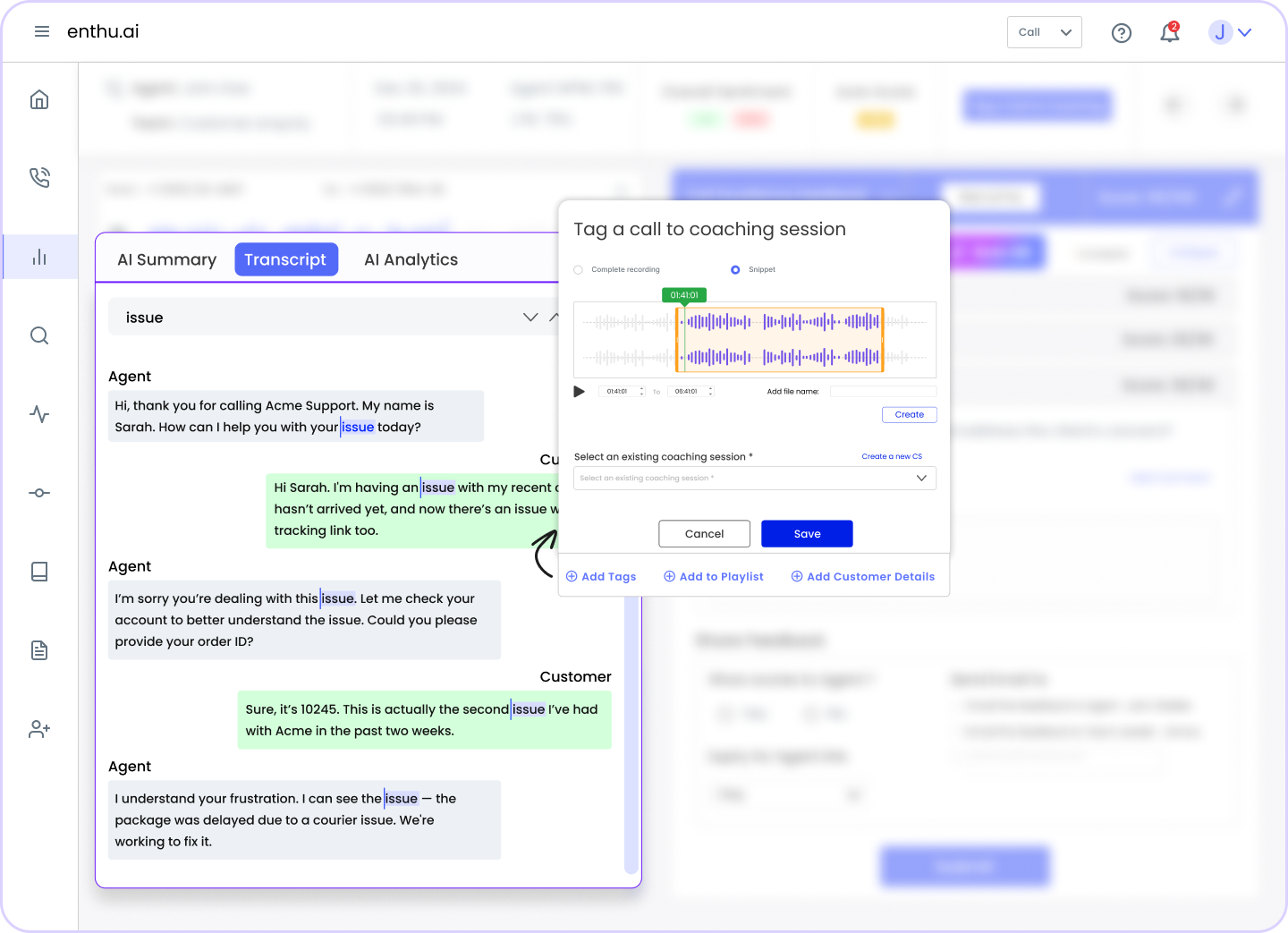
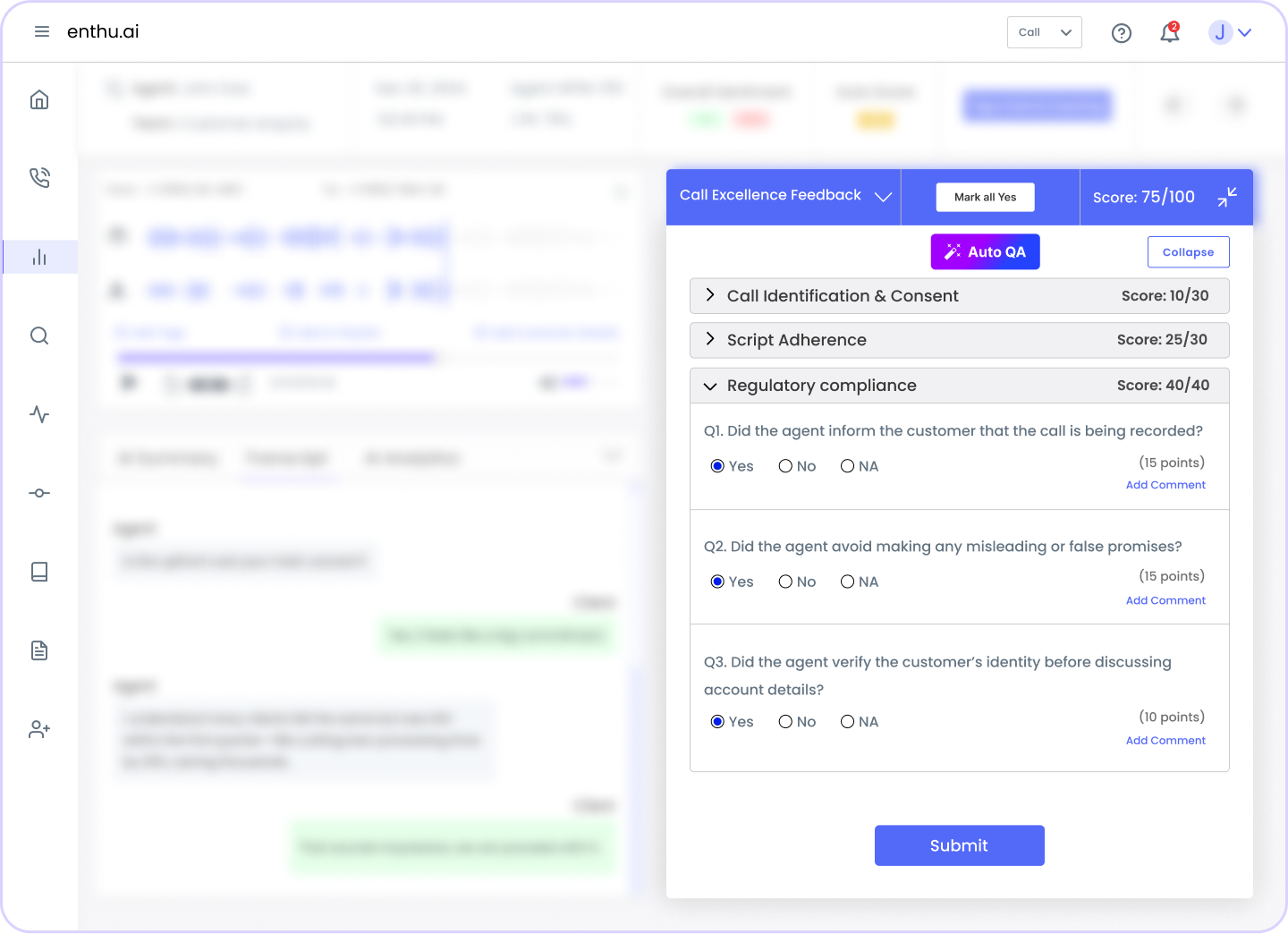
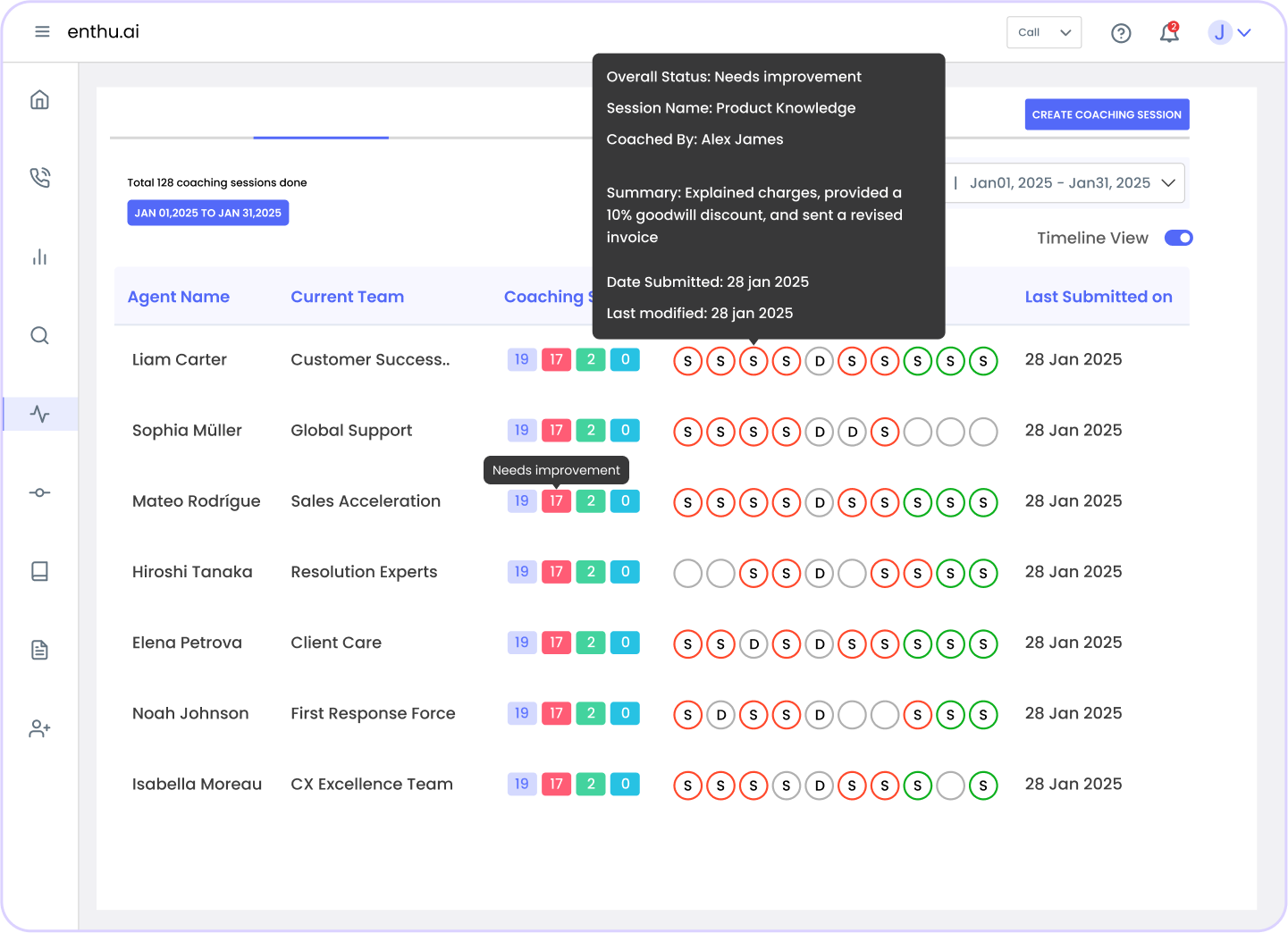
Conclusion
FAQs
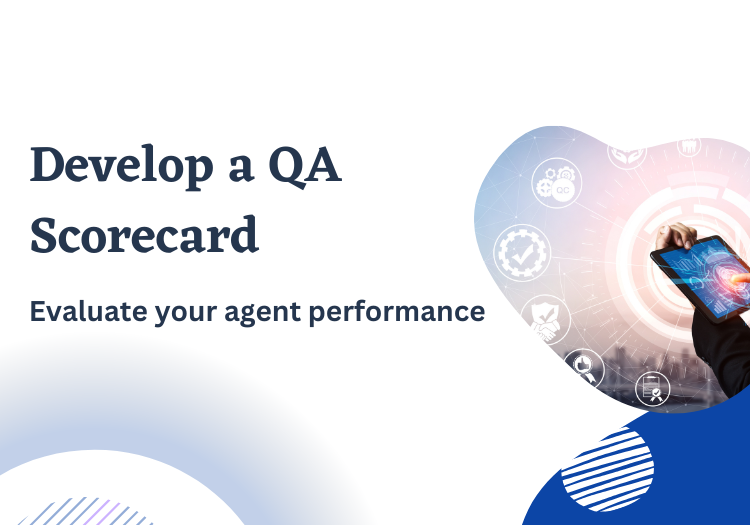
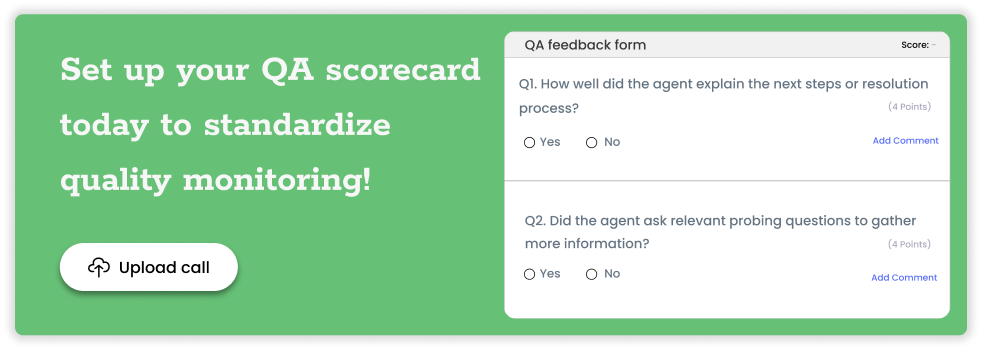


 On this page
On this page